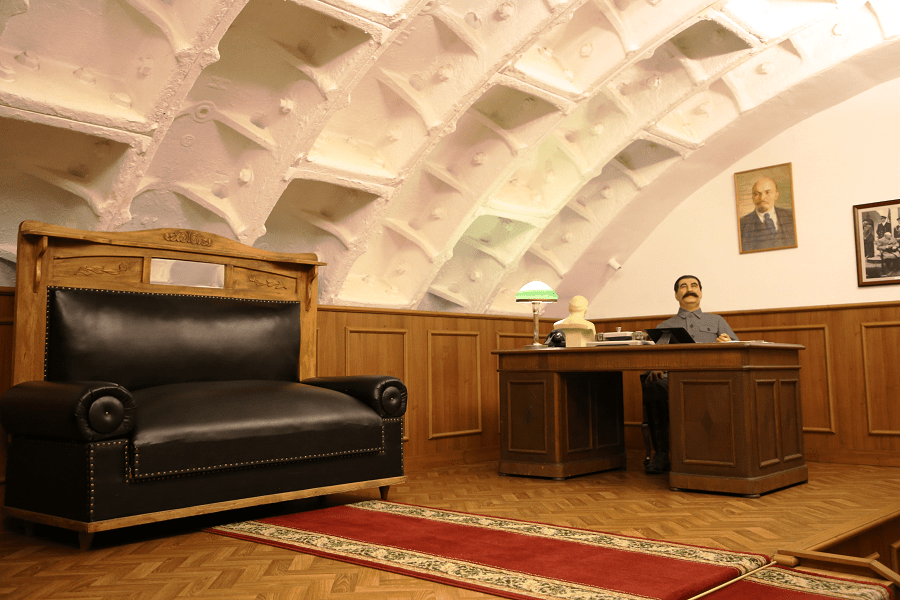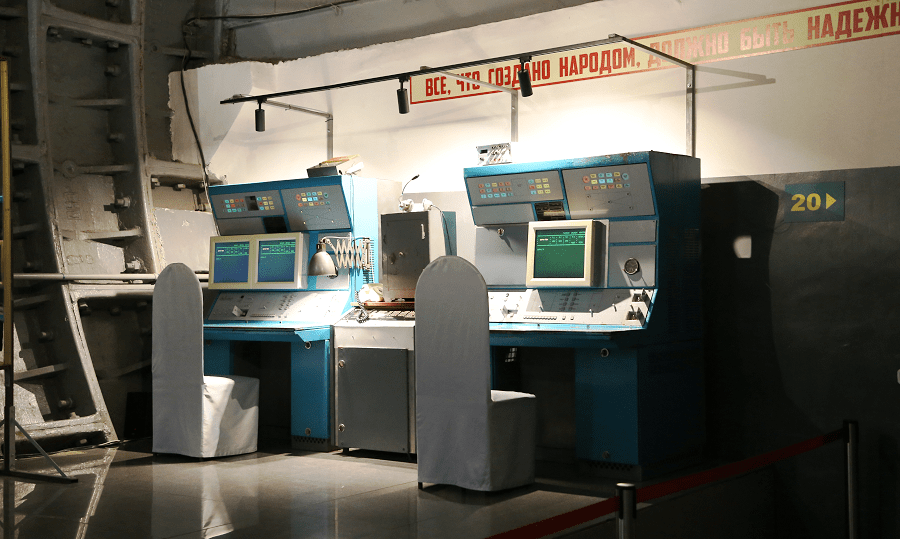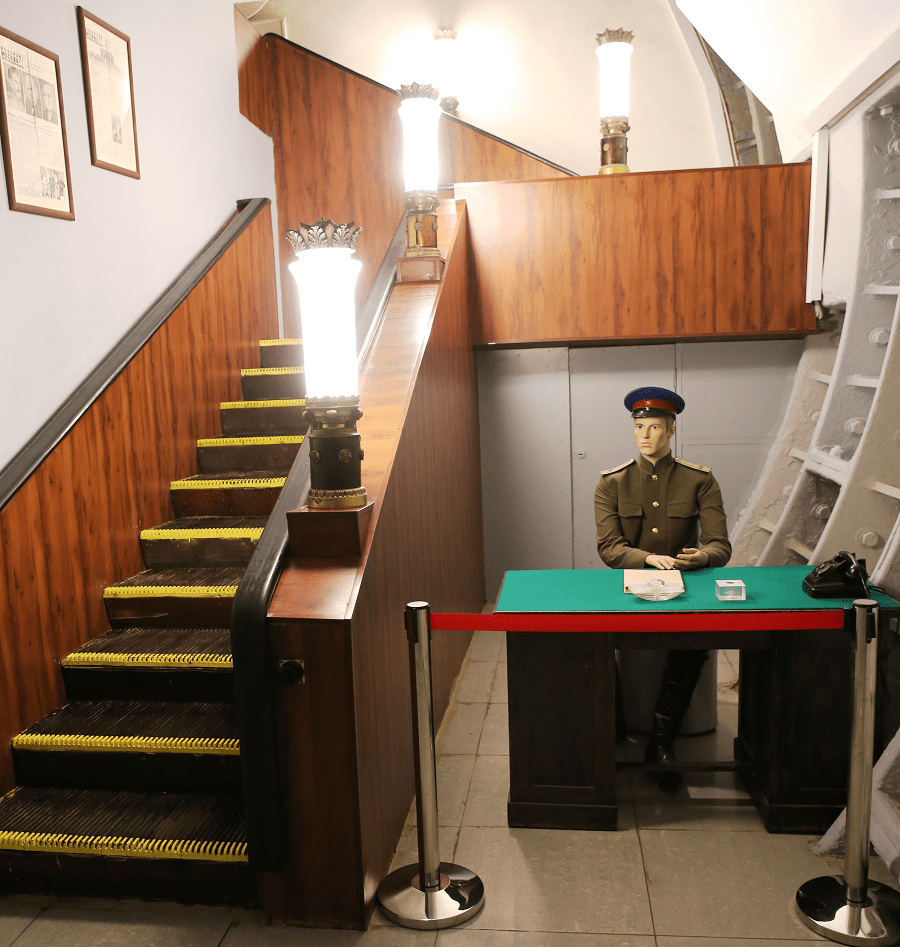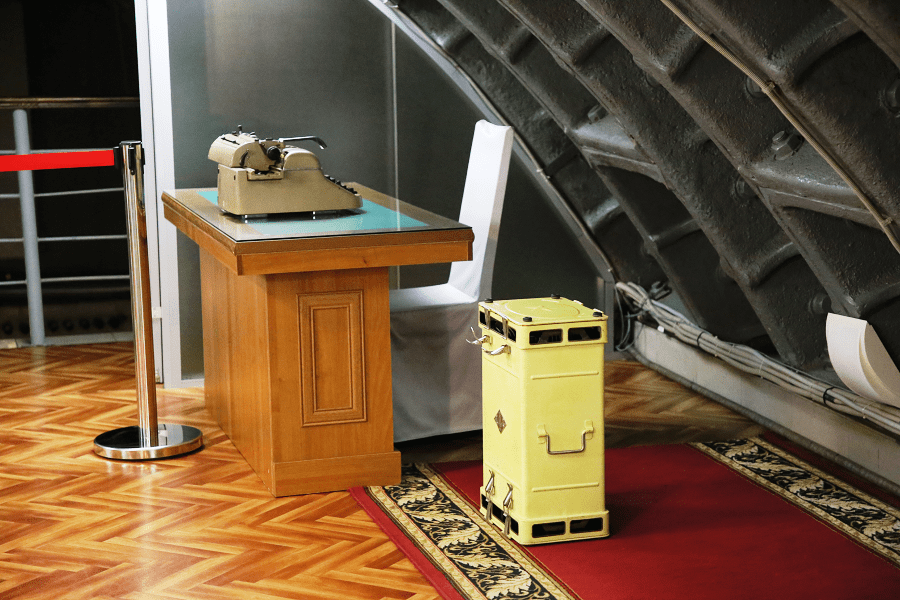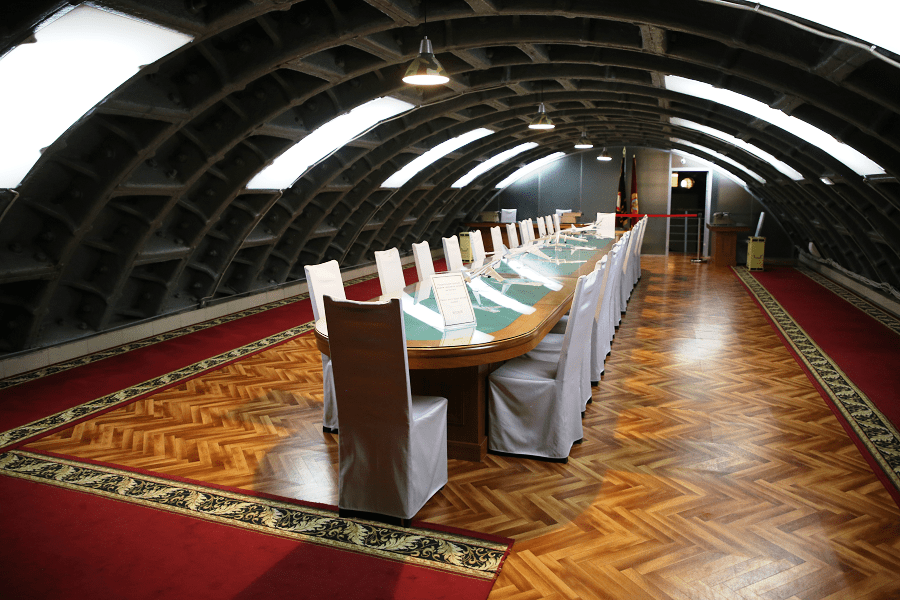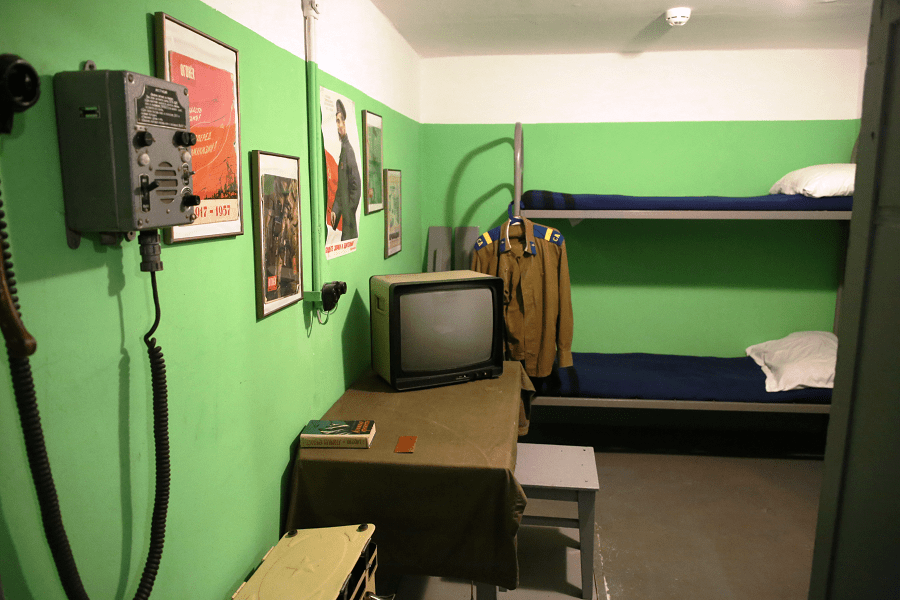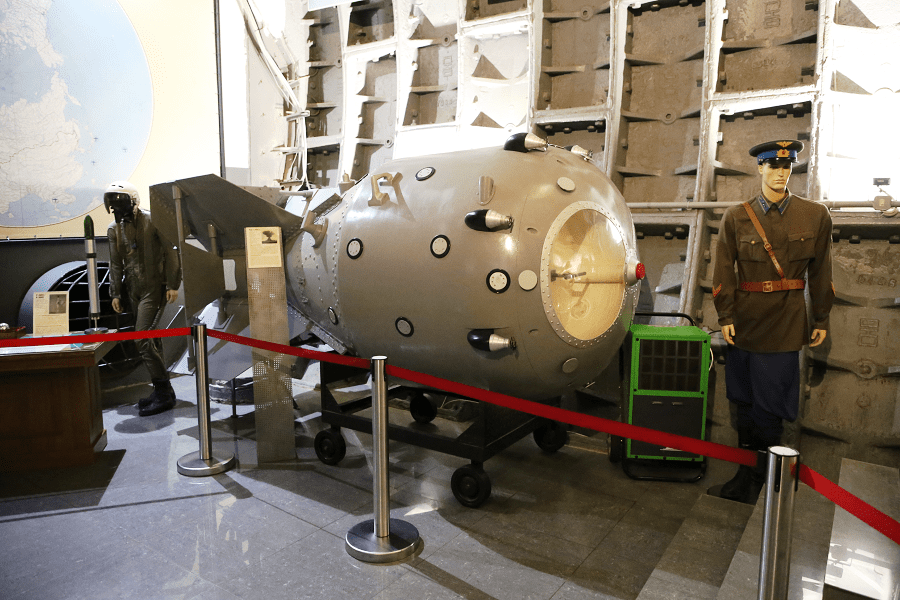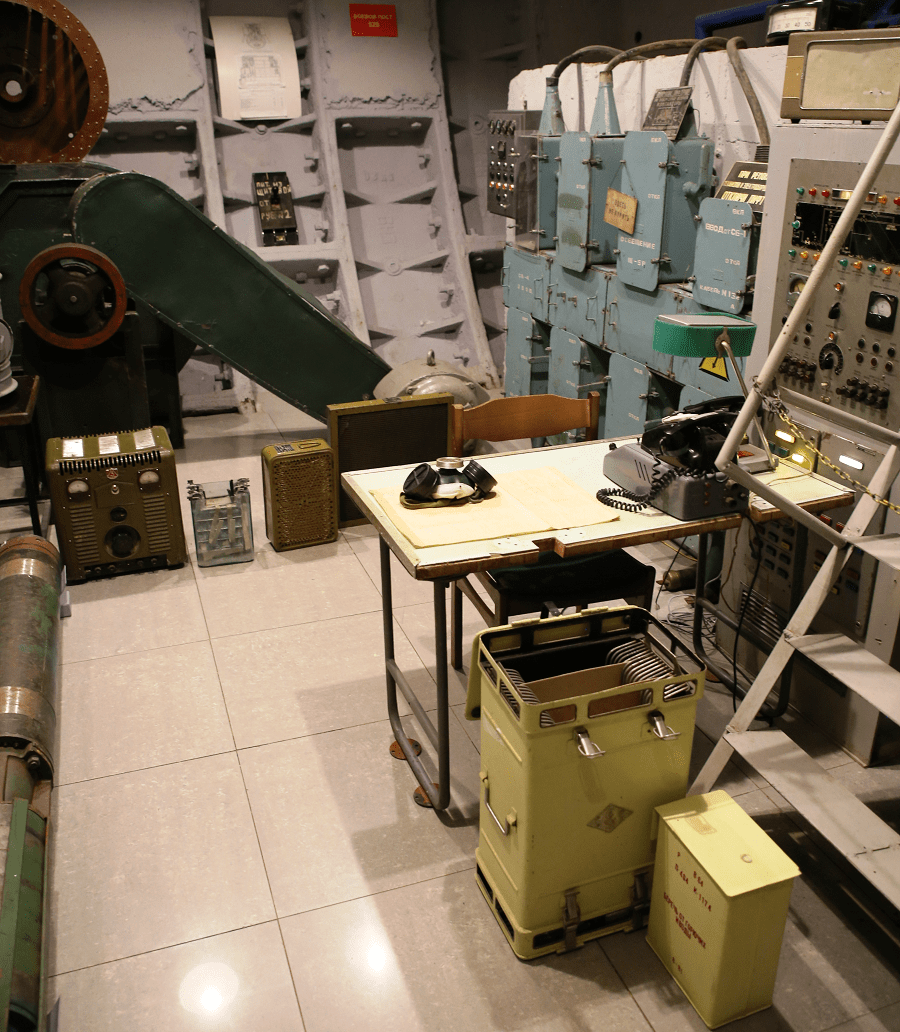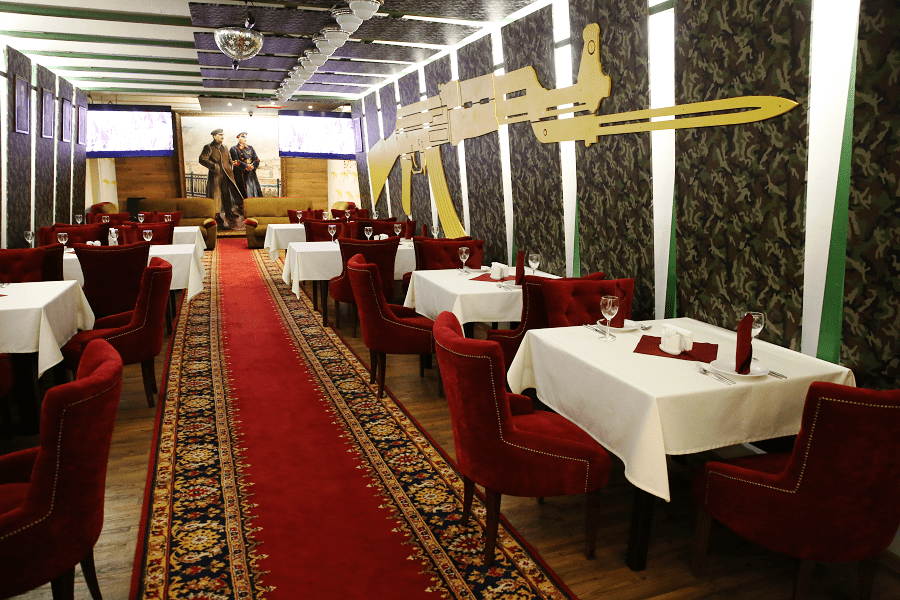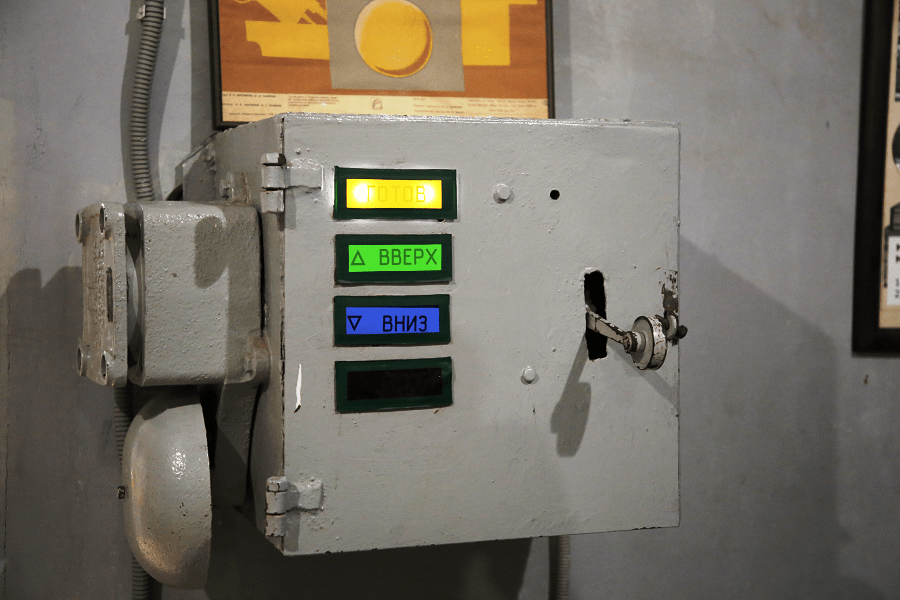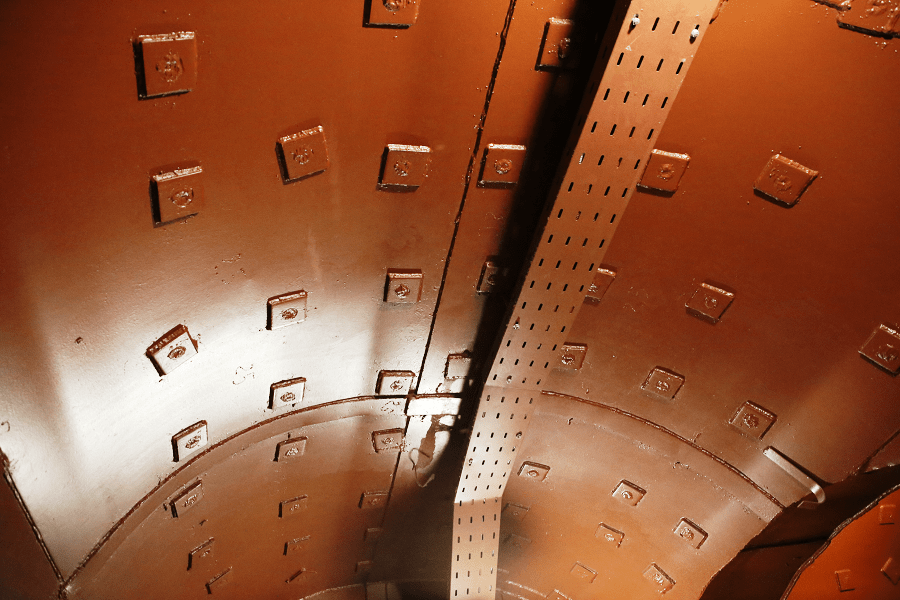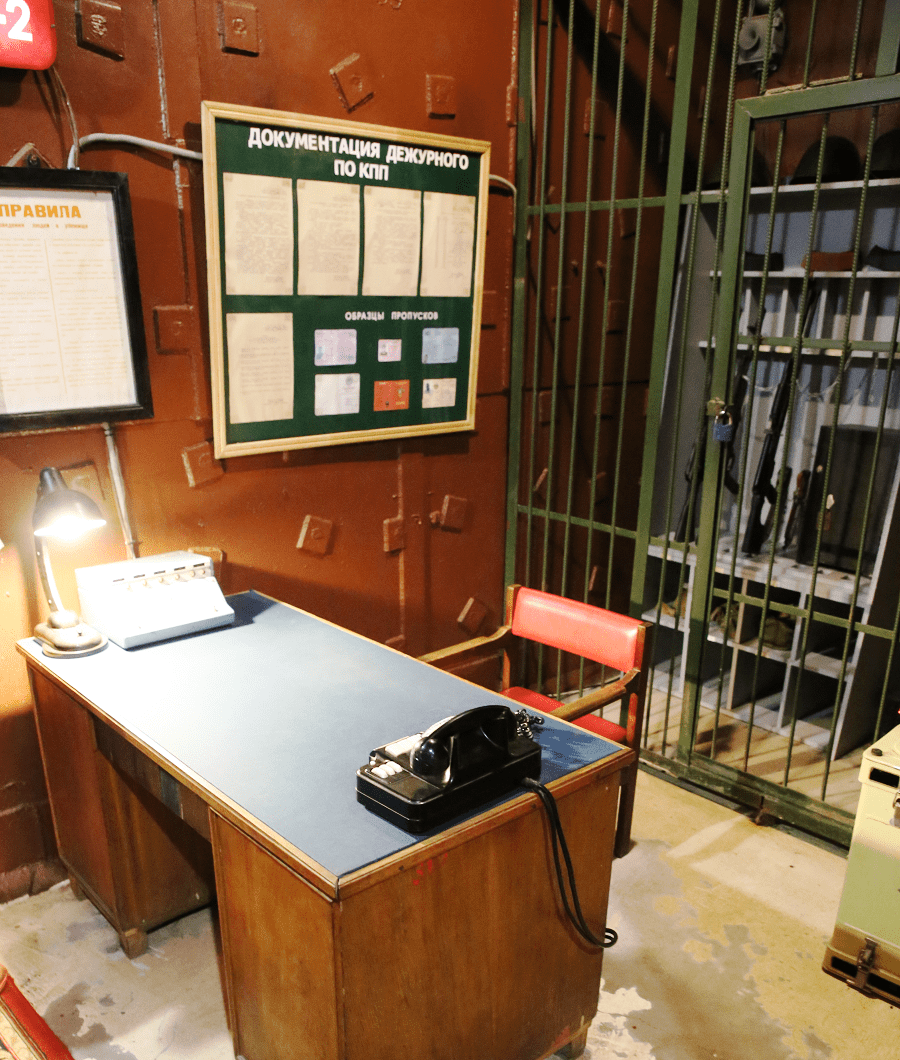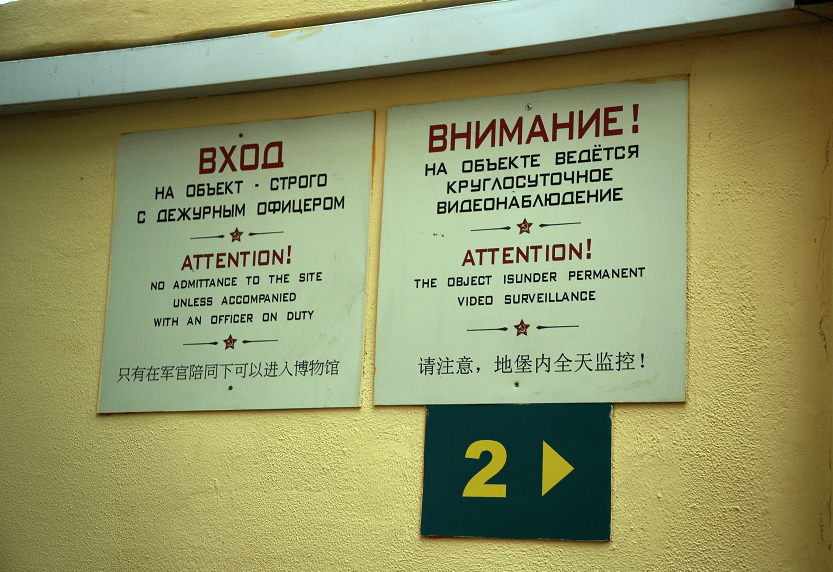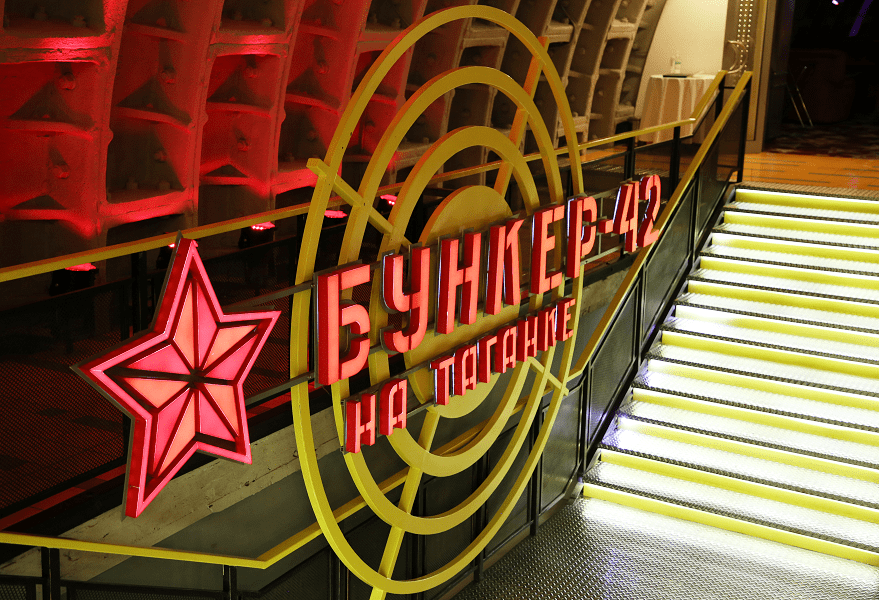Stalin’s bunker No. 42 – museum and cultural center
The history of the creation of object No. 42
Officially, the bunker is called “GO-42”. The bunker’s design began after the first tests of nuclear weapons in the USSR in 1949-1950. Stalin and the higher leadership of the USSR intended to use the object for shelter from a nuclear strike in Moscow. Before, the countries of the world did not use such shelters. After testing, scientists decided to lay the structure at a depth of more than 50 m. Work began in 1950 and the structure in 1956.
The bunker is located in the Taganka area, near the Kremlin. Stalin and representatives of the government of Moscow, the USSR, could quickly get to the facility and control the state in the face of a nuclear attack.
Characteristics of Stalin’s Bunker No. 42
The bunker of the Reserve Command Post (ZKP) of Long-Range Aviation, with an area of 7000 m2, lies at the same depth as the ring line – 65 m. Two passages previously connected the tunnels of object No. 42 with the Taganskaya metro platform. The first crossing, which supplies Stalin’s bunker, is between the Kurskaya and Taganskaya stations.
The second “walker” made it possible to get into the technical room of the Taganskaya Koltsevaya station. In certain places of the corridors, the sound of passing trains is heard. However, the bunker does not directly connect with the Moscow metro, and the tunnel is closed with reinforced concrete.
Development of the museum and cultural centre
In 1986, the last soldier left the bunker; moving around the territory does not require special permits. Stalin’s secret object No. 42 did not meet the technical requirements. New analogues of the bunker were built in Moscow, the Moscow region, and the Vladimir region. Combat duty is conducted in modern facilities, and excursions are not available. Object No. 42 housed a laboratory for geodetic research in peacetime, a radio station, and a telegraph. In 1995, the building was abandoned, and in 2000, Stalin’s bunker was declassified.
The nearest metro stations, accidents, and flooding of the bunker with groundwater required severe restoration. In 2006, the Novik-Service company bought the bunker and rebuilt it as a museum. After the reconstruction, the museum exhibits were collected from Moscow’s military departments.
The first tours of Stalin’s bunker took place in 2006. The USSR Ministry of Defense gave visitors red passes containing a photo of a man in a gas mask. The tour rules provided the mandatory use of a special raincoat.
In 2007, the museum filmed the action-packed thrilling film “Contagion” with the participation of the famous actor Eric Roberts. In 2008, the museum was chosen to present the novel “Metro 2033” and the online game Red Alert 3.
Excursions to object No. 42 were also temporarily suspended during the action movie “SMERSH-XXI” creation. So the bunker became a cultural centre.
The descent down the mine
The protective dome is connected to the bunker using a vertical shaft. The structure’s diameter is 6 m, and the depth is 65 m. The interior equipment is an elevator and stairs. The tour participants must go down 18 floors deep into the earth. The total number of steps is 310, the average is 20 cm, and the width is 25 cm. The staircase corresponds to the dimensions of 2×4 m.
Rings form Stalin’s bunker and individual fragments weigh 950 kg. The cracks were initially veiled with lead wire, preventing radiation penetration. Because the broom’s high content threatened the excursion participants’ health, the lead was removed.
Rocket launch command post
From 1956 to 1986, Stalin’s secret facility served as the combat control centre of the Long-Range Aviation Headquarters. The screens received code combinations that ensured the launch of missiles.
The officers on duty, dialling the code, did not have information, a training alarm or a real one. The place of the rocket landing is also unknown. The museum has a reconstructed control centre for missile flights from Moscow.
Exposition hall
The attributes of the post-war era are of particular interest to museum visitors. Some of the exhibits are prohibited from filming, referring to the use of weapons by the current troops. One of the main exhibits is the first atomic bomb, RDS-1 (“Stalin’s Jet Engine”), with a capacity of 22 KT, weighing 4.5 tons, made in 1949. The project was developed for three years under the supervision of Kurchatov and Kharitonov.
Simulated nuclear war
The most memorable part of the tour is the simulation of the launch of the atomic bomb. Visitors are led into the corridor, and the lights are turned off. The siren starts to howl, red lights flash, and the loudspeaker announces a 10-megaton nuclear strike.
Restaurant “Bunker No. 42”
After a tour, those who wish are invited to visit the restaurant complex “Bunker No. 42”.
Excursions
The tour prices start from 2200 roubles for foreigners depending on the tour program.
Group tours are held daily.
Individual excursions and excursions after 20:00 are booked and paid in advance, at least 24 hours in advance.
Visiting excursions by children under the age of 14 only accompanied by adults.
The descent to the museum and the ascent to the surface is carried out by stairs.
Visiting the museum by children under 8 years old is impossible for safety reasons.
Address: 115172, Moscow, 5th Kotelnichesky lane, 11. Metro: Taganskaya (ring), Taganskaya (radial), Marksistskaya.





